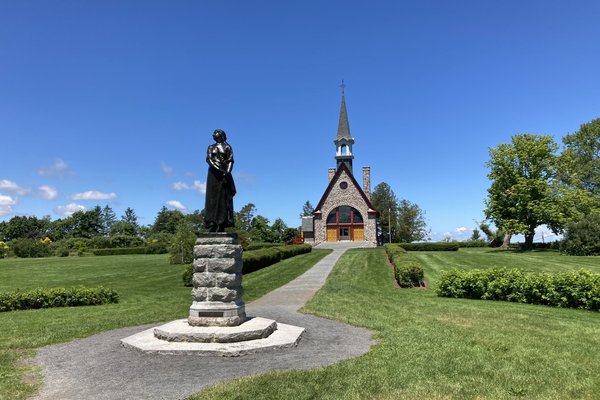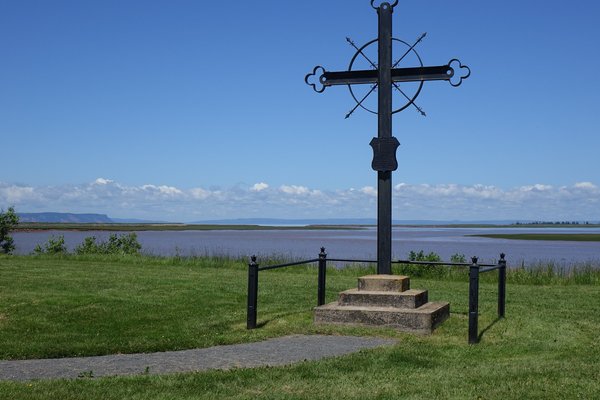Canada
Grand Pré
The Landscape of Grand Pré is a polder created for farmland by the Acadian community that holds high symbolic value for them.
The reclamation of the land in this tidal flooded zone was carried out in stages in the 17th and 18th centuries. The polderisation used dykes as well as a community-based management system still in use today. Grand Pré became the place of memory for the Acadian diaspora, as these descendants of the 17th-century French colonists were deported from here in 1755 by British colonial officers. A number of symbolic memorial buildings and monuments to commemorate this have been added to the landscape in the 20th century.
Community Perspective: the site has a large Visitor Center (closed November-April) that tells the Acadian history well. Frédéric describes several viewpoints from which to admire their polder landscape.
Site Info
Official Information
- Full Name
- Landscape of Grand Pré (ID: 1404)
- Country
- Canada
- Status
-
Inscribed 2012
Site history
History of Grand Pré
- 2012: Inscribed
- Inscribed
- Type
- Cultural
- Criteria
- v
- vi
Links
- UNESCO
- whc.unesco.org
- Official
-
- pc.gc.ca — Parks Canada
All Links
UNESCO.org
- whc.unesco.org — whc.unesco.org/
Official Website
- pc.gc.ca — Parks Canada
News Article
- Oct. 30, 2015 cbc.ca — Archeologists searching for Grand-Pré Acadian church site
- July 19, 2014 thechronicleherald.ca — Grand Pre chapel gets new protection
- July 9, 2013 novanewsnow.com — View Park opened at Grand Pré
Community Information
- Community Category
- Human activity: Sites of Memory
- Cultural Landscape: Continuing
Travel Information
Recent Connections
-
Perfect Inscriptions
2012 -
Time Capsules
"... found behind the cornerstone of th… -
Gothic Revival
North Grand Pré Community Church (1861)…
Connections of Grand Pré
- Geography
-
-
Atlantic Ocean
Coastal areas border the Minas Basin, an inlet of the Bay of Fundy
-
- Trivia
-
-
Built or owned by French
French colonization -
Minority communities
Acadians
-
- History
-
-
Time Capsules
"... found behind the cornerstone of the Memorial Church. It contained an Acadian flag, a document and newspapers" (contents now in the Visitor Center) -
Sieges and Battles
Battle of Grand Pré (February 10-11, 1747) between British and French forces, Siege of Grand Pré (November 27-December 4 , 1749) between British and Mi'kmaq, Maliseet and AcadiansSee en.wikipedia.org
-
- Ecology
-
-
Tidal effects
marked by one of the most extreme tidal ranges in the world, averaging at 11.6 metres (Unesco)
-
- Architecture
-
-
Gothic Revival
North Grand Pré Community Church (1861)See victorianweb.org
-
- World Heritage Process
- Human Activity
-
-
Irrigation and drainage
drainage system included an ingenious device called an 'aboiteau' (AB ev) -
Polders
an exceptionally well preserved polder landscape that is unique in North America (AB ev)
-
- Constructions
-
-
Cemeteries
Old Acadian cemetery -
Railways
A railway was also built along the coastal zone (1869), close to Old French Road. It was in use up until 2008 and the track is still in place (AB ev)
-
- WHS on Other Lists
-
-
Ramsar Wetlands
Southern Bight-Minas Basin
-
- Timeline
-
-
Built in the 17th century
The first attempts at colonization by the French, in this maritime region of North America, date back to the 17th century + creation of polders was started in 1680 (AB ev)
-
News
- cbc.ca 10/30/2015
- Archeologists searching for Grand-…
- thechronicleherald.ca 07/19/2014
- Grand Pre chapel gets new protecti…
- novanewsnow.com 07/09/2013
- View Park opened at Grand Pré
Recent Visitors
Visitors of Grand Pré
- Alexander Barabanov
- Alex Goh
- alicemears
- Ammon Watkins
- Ana Lozano
- Antonio J.
- Argo
- Atila Ege
- AYB
- Bram de Bruin
- Brendan Carroll
- brornt
- Can SARICA
- Carl Le Boeuf
- Carlo Sarion
- Cluckily
- CynthiaW
- dave wood
- David Aaronson
- Els Slots
- Frédéric M
- FS
- Gary Arndt
- George Gdanski
- GeorgeIng61
- Gernot
- Harry Mitsidis
- Iain Jackson
- Jacob Choi
- Janos
- Jarek Pokrzywnicki
- Jason Boulette
- Jawnbeary
- Jay T
- Jeanne OGrady
- Jim
- J_neveryes
- Jonas Hagung
- Jonas Kremer
- JR's HERITAGE SITES
- KarenBMoore
- Karito Vies
- KeithBailey
- Lara Adler
- Lembu
- leroykstlj
- Lillybett
- Loic Pedras
- Ludvan
- Luis Filipe Gaspar
- Matthewsharris
- Mazeman
- MH
- Michael Ayers
- Michael Novins
- michaelsballard
- Mihai Dascalu
- Mikko
- Morodhi
- Mstrebl1990
- Naim Y
- natlefebvre@hotmail.
- Nihal Ege
- Philipp Leu
- Philipp Peterer
- puessergio
- Randi Thomsen
- Reisedachs
- Roger Ourset
- Roman Bruehwiler
- Simonh
- Svein Elias
- Szucs Tamas
- Thomas Buechler
- Thomas van der Walt
- Tim Allen
- Tranvianoruega
- Van Hung
- Vsacan
- Weecheng
- Wojciech Fedoruk
- ZCTLife
- Zoë Sheng
Community Reviews
Show full reviews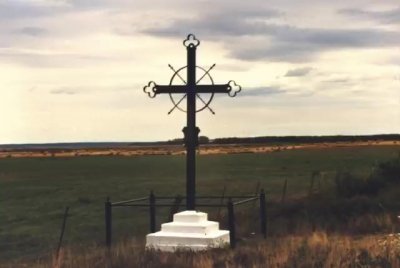
In 1999, I traveled to Halifax for a family vacation. It was a special pilgrimage for my family as we are direct descendants of the ousted Acadians that still reside in the Acadian Triangle in Louisiana. For personal reasons, I rate this location very high and hope to return and visit the site again.
I would like to say that the trip to Halifax/Nova Scotia was very picturesque, entertaining, and an educational trip that I highly recommend. In addition to the World Heritage Location Grand Pré, there were a wide array of historical, botanical, maritime activities. These locations I rate very favorably if you are visiting: Halifax Public Gardens, Halifax Citadel National Historic Site, Halifax Waterfront Boardwalk, Peggy’s Cove Lighthouse and Village, Fort Edward National Historic Site, Port-Royal National Historic Site, Fort Anne National Historic Site, & Annapolis Royal Historic Gardens. There is a ton of Titanic history, and I really enjoyed the whale watching tour. Unfortunately, I was unaware of the Old Town Lunenburg during my visit even though it was inscribed in 1995, but this was before I was aware of the World Heritage Site list.
The drive from Halifax to Grand Pré was an hour by car and pleasant. The park was well maintained, the exhibits were informative, and the views were stunning in every direction. At the time I visited the site, the Deportation Cross was located on private land and there was only a telescope from the park to view from afar. I …
Keep reading 0 comments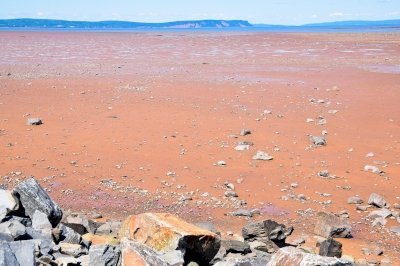
In 1907, John F. Herbin, a jeweller from the nearby town of Wolfville, bought 5.5 hectare (13.6 acres) of land on which the original Grand Pré community had stood. Herbin's mother was Acadian, and he knew the importance of the land to the Acadian diaspora, who treated it as a pilgrimage site. When Herbin sold the property to the Dominion Atlantic Railway in 1917, he did so under two conditions: (1) that the site be developed as a memorial park to the deported Acadians, and (2) that a parcel of land be deeded to the Acadian people on which a memorial would be built. After keeping its promise, the Railway sold the land to the Canadian government in 1957. Great-great-grandchild of Herbin (fifth generation) still operates the Herbin Jewellers in Wolfville.
Unfortunately, Grand Pré has nothing left from the days of the Acadian Exodus but for its peaceful landscape. The best (and non-symbolic) tangible connection to history is the dykes, which can be visited by driving to the end of the Grand Pré Road and then turning either right or left to the Long Island Road. I took right (east) and at the end of this road, there was a trail on top of the dykes, interpretative boards, and views of the Minas Basin (photo). Grand Pré has no grand views, however, and you can find more remarkable landscapes elsewhere in Nova Scotia.
Speaking of this small Canadian province, Nova Scotia boasts two other UNESCO World Heritage Sites, …
Keep reading 0 comments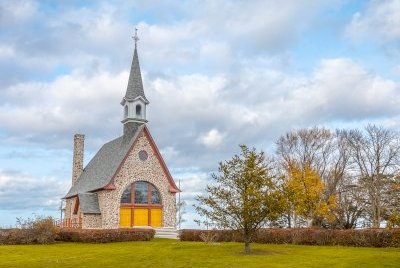
Grand Pré is comprised mainly of marshland that was first polderised by the Acadians in the 17th century for farming and settlement. Its inscription is based on two justifications: (1) the site represents the development of traditional agricultural techniques by the Acadians that adapted to the environmental and tidal conditions of the area, and (2) the site is a testimony to an important part of the history of this region—the Acadian diaspora.
Our visit last November 2022 was an easy 1-hour drive from Halifax. As we were visiting outside of the dates of operation (from May to October) the visitor reception centre, the memorial church, and bookings for the tent accommodation and guided tours were all closed. The grounds remain open year-round. Visiting outside the season meant that learning about Grand Pre's history on-site would be limited to the information panels scattered around the area, and thus, prior reading is helpful. On a positive note, we didn't have to pay anything and you could expect that there would be a lot fewer visitors, which was the case during our visit.
After crossing a railway track that seemed to double as a walking trail, we were welcomed by the statue of Evangeline, the heroine of a poem by Henry Wadsworth Longfellow that retold the story of Le Grand Dérangement. Past the statue is the memorial church, which was pretty much the main building on the site. We continued strolling to the west and reached an area where …
Keep reading 0 comments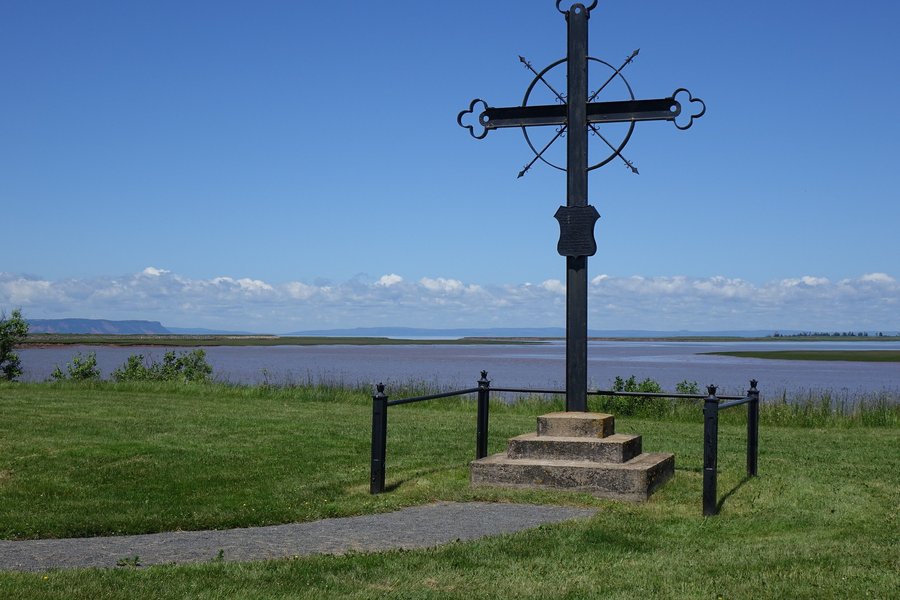
Nowadays this is mostly a Place of Remembrance for the Acadian people, who were forcefully evicted from their lands in 1755. No expense has been spared for a rather grandiose visitor center, a rebuilt church and surrounding gardens. Upon entering the visitor center, I was immediately stimulated to go and see the 20min video, which is being played in the theatre. It tells the story of how the Acadians were chased from their land. It left me with a weird feeling – it's like a propaganda film.
The World Heritage area is larger than this alone (and free to visit): it includes farmland in the polder, a wooden church from 1861 founded by the British Planters who subsequently cultivated the land, and a memorial to both the Acadians and the Planters at Horton Landing. By car I drove past all these locations, they are only a few kilometers apart.
All original buildings were burned by the British colonists. The picture shows the Acadian Cross at Horton Landing, the location from which the Acadians had to leave by boat. This visual perspective, with Cape Blomidon in the distance, is actually part of the World Heritage values. I have never seen “viewsheds” as this displayed so explicitly on a WH map.
Like most others, I rate this site very low. It should never have been inscribed. I have no problem with the descendants of the Acadians wanting to commemorate this place, but its universal value is lost on me.
Keep reading 0 comments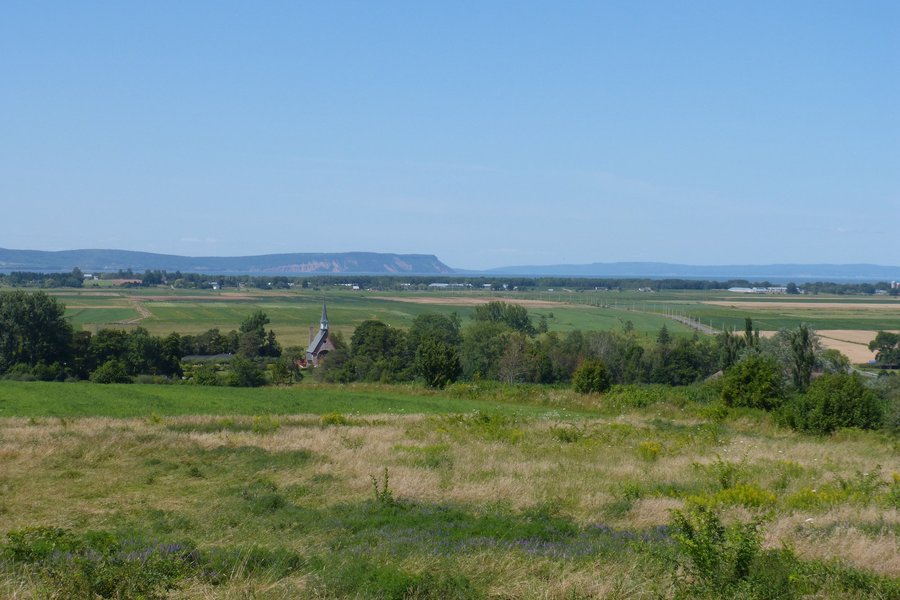
I visited Grand Pré with my family in August 2019 during our WH trip to Nova Scotia. We came from Amherst (our base for Joggins) and headed next to Lunenberg. We stayed at a campground in North Grand Pré for two nights. It means we had to cross the core zone anytime we wanted to go somewhere.
As the tragic history of Acadians is already explained by previous reviewers, I will concentrate on my visit. We arrived there by midday and spent our first afternoon touring the polder. The size of the landscape is impressive when you consider that Acadians took it from the sea by building dykes and aboiteaux. Moreover, it's not any sea. It's the Bay of Fundy with the highest tides in the world, averaging 11.6 m at the site!
We started our visit around the church, with the statue and the nice gardens. We then walked to the viewpoint which is a must do the realize the size of this podler! Main photo above is showing the view of the church and Cape Blomidon in the background, which was included in the buffer zone for this view. Our next stop was the Covenanter church, which is just outside the core zone. This church was built in 1811 and is the oldest extant Presbyterian Church in Canada and a National Historic Site of Canada. We then made it by car to Horton Landing and the Deportation Cross, which is where Acadians were forced to board …
Keep reading 0 comments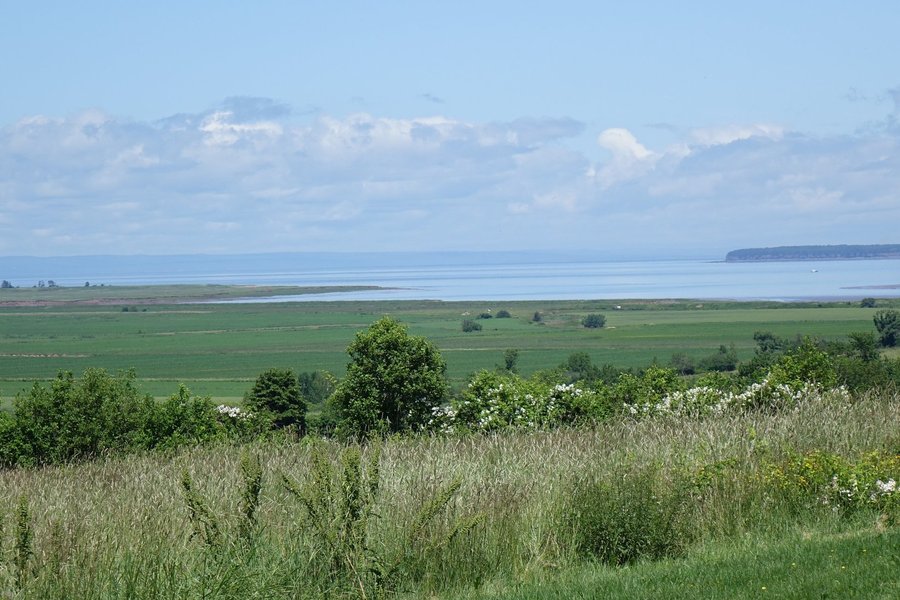
Visited 20JUL 2018
This site is in a marshland area on the south shore of the Bay of Fundy, close to Wolfeville, being pleasant and historic and would be a good place to stay nearby.
The Visitor Centre at Grand Pré is impressive, especially its multimedia exhibits of the brilliant diking systems of the Acadians and in-depth explanations of their cruel expulsion by the British from the lands they worked so hard to tame from the sea.
Caught between French and British power struggles, around 10,000 Acadians were eventually put on ships and taken to other colonies, many winding up in Louisiana in the US, but some of whom found their way back to their cherished homeland. The visitor centre also depicts the way Henry Wadsworth Longfellow made this shameful part of history well known by penning his epic poem “Evangeline.”
There is a pleasant walk along beautiful grounds to see the Statue of Evangeline, a re-built church dedicated to the memory of the Acadians, and a rustic blacksmith shop. Atop a hill, overlooking the Sea is a panoramic vista of the Acadian farmlands. The UNESCO plaque is also to be found there.
Inside the church were some paintings with lines from the poem, “Evangeline”, which were moving. In fact, this whole site was touching and brought to mind one of the many examples of man’s inhumanity in our sad history.
Keep reading 0 comments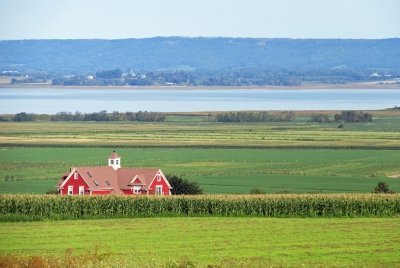
They were caught between two great powers in the 18th century, and so the French Acadians of Grand Pré fell on the wrong side of history. The French settlers had constructed dykes to improve farmland along the coast of the Bay of Fundy, and established trade ties with the British to sell their agricultural bounty. Nevertheless, the Acadians were unwilling to cut ties to the French, and were thus unceremoniously rounded up and exiled from the land they had built. I was familiar with the story of the Acadian diaspora from history classes in school, but it became much easier to envision after visiting the museum at the Canadian national historic site at Grand Pré in September 2017. The museum includes a film about the deportation, while the nearby memorial church displays artifacts and stories from the settlers. I climbed the trail above the site to a lookout (with the World Heritage plaque) in order to view the rich farmland left behind after the British expelled the settlers and burned their villages; the tranquil setting today belies the tragic history. A cross in nearby Hortonville commemorates the Acadian deportation, but Nova Scotia's loss was a gain for the United States, as many of them moved to Louisiana and created a distinctive Cajun culture.
Logistics: Grand Pré is about an hour northwest of Halifax, and can be reached by private transportation; once there, the museum, church, and lookout at the national historic site are all connected by footpaths.
Keep reading 0 comments
Grand Pre is a cultural landscape located in the northeastern part of Nova Scotia, on the southern shore of Bay of Fundy. This part of the province is not very crowded and the landscape itself is not spectacular, especially comparing to the beautiful ocean views in the south. The site is connected with the history of Acadians, French settlers of this place, expelled by the British in the middle of 18th century. The World Heritage Centre is devoted to the history of Acadians, their daily life and exile. Then, visitors may walk to the surrounding meadow, garden and church (actually, serving as another museum of Acadia rather than as a place of religious ceremonies). The historical part was quite interesting but I am sure that if was not inscribed as WHS, it would not attract many tourists. Being there do not forget to drive along the polder to the sea shore, which during early summer is a place of stop for thousands of migrating birds (I did not see any in September).
By the way, the WH centre informs that the place is the newest WHS in Canada, which is not true since Red Bay Basque Whaling Station was inscribed in 2013.
Keep reading 0 comments
As a direct descendant of those deported in 1775, I finally felt like pieces of my life had come together and I had a real connection to my past. When I arrived at Grand Pre, I felt like I had come home. It was also a very humbling experience to walk where my ancestors lived and eventually left from.The land where I grew up in Louisiana had always been important since this is the area my family settled after leaving "Acadie". Now I know why. The beauty of Grand Pre was indescribable. It is a place I want to return to again.
Keep reading 0 comments
